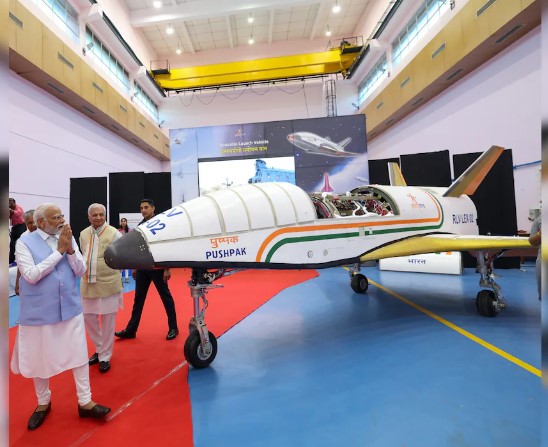Context:
The Indian Space Research Organisation (ISRO) has successfully conducted the Pushpak Reusable Landing Vehicle (RLV) LEX 02 landing experiment.
More on the news
- Pushpak Reusable Landing Vehicle (RLV) LEX 02 landing experiment was successfully conducted at the Aeronautical Test Range in Chitradurga, Karnataka.
- The RLV LEX 02 landing experiment is the second of a series of experiments conducted by the ISRO.
- The first mission RLV-LEX-01 was accomplished in April 2023.
- RLV-LEX-02 demonstrated the autonomous landing capability of RLV from off-nominal initial conditions at release from a Chinook Helicopter.
- The winged vehicle called ‘Pushpak’, was lifted by an Indian Airforce Chinook helicopter and was released from 4.5 km altitude.
- The mission successfully simulated the approach and high-speed landing conditions for RLV returning from space.

Significance of the mission
- With this second mission, ISRO has re-validated the indigenously developed technologies in the areas of navigation, control systems, landing gear and deceleration systems essential for performing a high-speed autonomous landing of a space-returning vehicle.
Reusable Launch Vehicle – Technology Demonstrator (RLV-TD)
- A reusable launch vehicle is a space shuttle that can travel from low earth orbit (LEO) to outer space to deliver payloads and return to Earth for use again.
- ISRO’s first demonstration was conducted successfully in 2016 with a demonstration of the winged vehicle RLV-TD in the HEX mission.
- The winged RLV-TD has been configured to act as a flying test bed to evaluate various technologies, namely, hypersonic flight, autonomous landing and powered cruise flight.
- The major advantage of RLV is Cost Reduction: Once an RLV completes a mission, it returns to the earth and can be used again.

